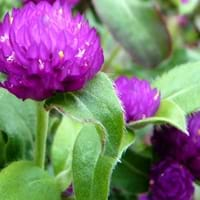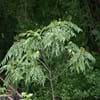Life Span
Annual
Perennial
Type
Tender Perennial
Tender Perennial
Origin
Central America
North America, Mexico, Latin America and the Caribbean, Caribbean, Central America, South America
Types
Ornamental
Guzmania lingulata, Guzmania monostachia
Number of Varieties
Not Available
Habitat
Tropical regions
Hills, Moist Soils
USDA Hardiness Zone
9-12
Not Available
AHS Heat Zone
12 - 1
Not Available
Sunset Zone
A1, A2, A3, H1, H2, 1a, 1b, 2a, 2b, 3a, 3b, 4, 5, 6, 7, 8, 9, 10, 11, 12, 13, 14, 15, 16, 17, 18, 19, 20, 21, 22, 23, 24
Not Available
Habit
Clump-Forming
Not Available
Minimum Width
Not Available
Flower Color
Fuchsia, Violet
Red
Flower Color Modifier
Bicolor
Bicolor
Fruit Color
Not Available
Not Available
Leaf Color in Spring
Green, Gray Green
Light Green, Not Available
Leaf Color in Summer
Green, Gray Green
Not Available
Leaf Color in Fall
Green, Gray Green
Not Available
Leaf Color in Winter
Light Green
Light Green
Leaf Shape
Elliptic
Linear
Plant Season
Spring, Summer, Fall
Spring, Summer, Fall, Winter
Sunlight
Full Sun
Indirect sunlight
Type of Soil
Loam, Sand
Loamy, Sandy
The pH of Soil
Neutral
Slightly Acidic
Soil Drainage
Well drained
Loamy
Bloom Time
Early Summer, Summer, Late Summer, Early Fall, Fall
Late Autumn
Repeat Bloomer
Yes
Not Available
Tolerances
Drought
Dry soil, Shallow soil
Where to Plant?
Ground
Container
How to Plant?
Seedlings
Leaf Cutting, Transplanting
Plant Maintenance
Medium
Medium
Watering Requirements
Medium
Do Not over Water
In Summer
Lots of watering
Lots of watering
In Spring
Moderate
Moderate
In Winter
Average Water
Average Water
Soil pH
Acidic, Neutral, Alkaline
Slightly Acidic
Soil Type
Loam, Sand
Loamy, Sandy
Soil Drainage Capacity
Well drained
Well drained
Sun Exposure
Full Sun
Bright Indirect Sunlight
Pruning
Remove damaged leaves, Remove dead branches, Remove dead leaves
Remove damaged leaves
Fertilizers
All-Purpose Liquid Fertilizer
All-Purpose Liquid Fertilizer, slow-release fertilizers
Pests and Diseases
Red blotch
Bacteria wilt, Phytophthora Root Rot, Red blotch
Plant Tolerance
Drought
Drought
Flower Petal Number
Single
Single
Showy Fruit
No
Not Available
Edible Fruit
No
Not Available
Fragrant Fruit
No
Not Available
Foliage Texture
Medium
Coarse
Foliage Sheen
Matte
Not Available
Self-Sowing
Yes
Not Available
Attracts
Butterflies
Flying insects, Moths
Allergy
Skin irritation
Rash, Throat itching
Aesthetic Uses
Borders
Showy Purposes
Beauty Benefits
Not Available
Making cosmetics, Removes pimples
Environmental Uses
Air purification
Forms dense stands, Prevent Soil Erosion
Medicinal Uses
Cough, Diabetes
Acne, Eczema, Laxative
Part of Plant Used
Flowers, Leaves
Leaves
Other Uses
Traditional medicine, Used in making tea
Application in Handicrafts, Making Shampoo
Used As Indoor Plant
Yes
Sometimes
Used As Outdoor Plant
Yes
Yes
Garden Design
Bedding Plant, Container, Cutflower, Dried Flower/Everlasting, Mixed Border
Not Available
Botanical Name
GOMPHRENA globosa 'Woodcreek Purple'
GUZMANIA
Common Name
Globe Amaranth
Guzmania, Torch Bromeliad
In Hindi
GOMPHRENA globosa
Guzmania lingulata
In German
GOMPHRENA globosa
Guzmania lingulata
In French
GOMPHRENA globosa
Guzmania lingulata
In Spanish
GOMPHRENA globosa
Guzmania lingulata
In Greek
GOMPHRENA globosa
Guzmania lingulata
In Portuguese
GOMPHRENA globosa
Guzmania lingulata
In Polish
GOMPHRENA globosa
Guzmania lingulata
In Latin
GOMPHRENA globosa
Guzmania lingulata
Phylum
Magnoliophyta
Angiosperms
Class
Magnoliopsida
Liliopsida
Order
Caryophyllales
Poales
Family
Amaranthaceae
Bromeliaceae
Clade
Angiosperms, Core eudicots, Eudicots
Commelinids
Tribe
Not Available
Not Available
Subfamily
Not Available
Tillandsioideae.
Number of Species
Not Available
Difference Between Globe Amaranth and Guzmania
If you are confused whether Globe Amaranth or Guzmania are same, here are some features about those plants to help you choose better. Many people think that these two plants have the same characteristics, but one can see Globe Amaranth and Guzmania Information and learn more about it. Fertilizers required for proper growth of Globe Amaranth are All-Purpose Liquid Fertilizer, whereas for Guzmania fertilizers required are All-Purpose Liquid Fertilizer and slow-release fertilizers. Hence, one should know the basic difference between Globe Amaranth and Guzmania if you are planning to have them in your garden to enhance its beauty.
<
Flowering PlantsImportance of Globe Amaranth and Guzmania
Want to have the most appropriate plant for your garden? You might want to know the importance of Globe Amaranth and Guzmania. Basically, these two plants vary in many aspects. Compare Globe Amaranth and Guzmania as they differ in many characteristics such as their life, care, benefits, facts, etc. Every gardener must at least have the slightest clue about the plants he wants to plant in his garden. Compare their benefits, which differ in many ways like facts and uses. The medicinal use of Globe Amaranth is Cough and Diabetes whereas of Guzmania is Acne, Eczema and Laxative. Globe Amaranth has beauty benefits as follows: Not Available while Guzmania has beauty benefits as follows: Not Available.
Compare Facts of Globe Amaranth vs Guzmania
How to choose the best garden plant for your garden depending upon its facts? Here garden plant comparison will help you to solve this query. Compare the facts of Globe Amaranth vs Guzmania and know which one to choose. As garden plants have benefits and other uses, allergy is also a major drawback of plants for some people. Allergic reactions of Globe Amaranth are Skin irritation whereas of Guzmania have Rash and Throat itching respectively. Having a fruit bearing plant in your garden can be a plus point of your garden. Globe Amaranth has no showy fruits and Guzmania has no showy fruits. Also Globe Amaranth is not flowering and Guzmania is not flowering . You can compare Globe Amaranth and Guzmania facts and facts of other plants too.





